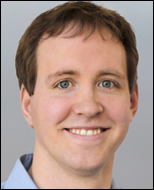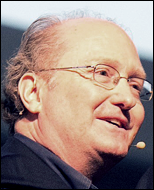
|
Curtis McMullen, "A Skeptical History of Numbers"May 1, 2019 | Video: [HTML5 Video] | [MP4] Quantum theory, virtual particles, curved space and dark energy all emerged from a critical assessment of the foundations of physics in the 20th century. In the same period, a foundational crisis threatened the edifice of mathematics itself. Focusing on the concept of numbers, this talk will recap some of the great leaps of imagination in the history of mathematical thought, describe the foundational crisis, critique the attempts to rescue certainty, and assess the current state of affairs.
|
|
|
Michael D. Johnson, "Photographing A Supermassive Black Hole With The Event Horizon Telescope"April 17, 2019 | Video: [HTML5 Video] | [MP4] Black holes are so dense that not even light can escape. But, through their immense gravitational pull, they also power the brightest and most efficient engines in the universe, lighting up the centers of galaxies where supermassive black holes dwell. Black holes are predicted to cast a shadow on their bright surrounding material, but no observation to date has had the angular resolution required to view a black hole directly and test this prediction. Dr. Johnson will describe the quest to complete the Event Horizon Telescope—an Earth-sized instrument with resolving power thousands of times finer than the Hubble Space Telescope—and to take the first picture of a black hole, putting Einstein's theory to the ultimate test.
|
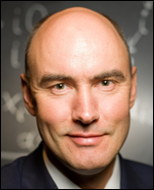
|
Martin Nowak, "The Mathematics of Cooperation"May 8, 2019 | Video: [HTML5 Video] | [MP4] Cooperation means that one individual pays a cost for another to receive a benefit. Cooperation can be at variance with natural selection: Why should you help a competitor? Yet cooperation is abundant in nature and is an important component of evolutionary innovation. Cooperation can be seen as the master architect of evolution and as the third fundamental principle of evolution beside mutation and selection. I will present mathematical principles of cooperation.
|
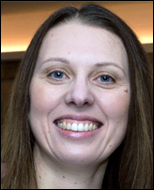
|
Lisa Barsotti, "The Dawn of Gravitational Wave Astronomy"September 26, 2018 | Video: [HTML5 Video] | [MP4] On August 17, 2017, only a couple of years after the first detection of gravitational waves from a binary black hole system, the Laser Interferometer Gravitational Wave Observatory (LIGO) observed gravitational waves from a new source: a binary neutron star system. Tens of telescopes, on the Earth and in space, followed-up the event, shedding light on some of the big mysteries of our Universe, from the origin of extremely energetic explosions in distant galaxies - the Gamma Ray Bursts - to the formation of heavy metals on Earth. In my talk I will describe these discoveries, how they help us to improve our understanding of the Universe, and what we can expect from future observations.
|
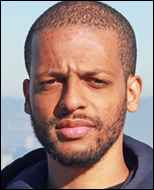
|
Jelani Nelson, "Sketching Big Data"October 25, 2017 | Video: [HTML5 Video] | [MP4]
A "sketch" is a data structure supporting some pre-specified set of queries and updates to a database while consuming space substantially (often exponentially) less than the information theoretic minimum required to store everything seen, and thus can also be seen as some form of functional compression. The advantages of sketching include less memory consumption, faster algorithms, and reduced bandwidth requirements in distributed computing environments.
|
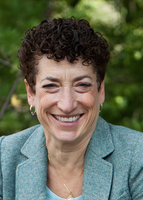
|
Naomi Oreskes, "The Scientist as Sentinel"March 29, 2017 | Video: [HTML5 Video] | [MP4] Scientists are often reluctant to speak in public on contested issues, for fear that this will "politicize" their science and have a negative impact on their credibility. In this talk, I examine these concerns, by exploring historical examples of scientists who have spoken up on scientific issues of broad importance, including nuclear weaponry, ozone depletion and climate change. These examples suggest that, while becoming a public figure does entail risks, there is little basis in history for the concern that it undermines the credibility of one’s scientific work. Moreover, these examples suggest that society needs scientists to speak up to alert society to challenges that, without science, we would not understand and might not even recognize. Yet they also do point to certain limits to what scientists can and should do as public figures.
|
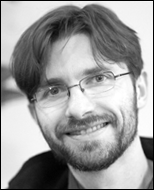
|
Krzysztof Gajos, "Design and Discrimination"March 9, 2016 | Video:[HTML5 Video] | [MP4] The currently prevalent one-size-fits-all approach to designing digital products inadvertently - but inevitably - leads to discrimination by making some people systematically a little more likely to succeed than others. In his lecture, Prof. Krzysztof Gajos will first show how current design practice discriminates against people based on their motor abilities, their ability to perceive color, or their subjective perception of what is aesthetically pleasing. He will then present a Computer Scientist’s approach to this problem: algorithms that automatically personalize design to provide more equitable access to digital resources.
|
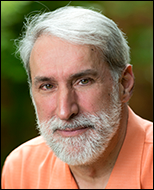
|
Daniel Nocera, "Energy for 1 × 6 Billion"November 18, 2015 | Video: [HTML5 Video] | [MP4] The capture and storage of solar energy at the individual level - personalized solar energy - drives inextricably towards the heart of this energy challenge by addressing the triumvirate of secure, carbon neutral and plentiful energy. Because energy use scales with wealth, point-of-use solar energy will put individuals, in the smallest village in the non-legacy world and in the largest city of the legacy world, on a more level playing field. Moreover, personalized energy (PE) is secure because it is highly distributed and the individual controls the energy on which she/he lives. Finally, the doubling of global energy need by mid-century and tripling by 2100 is driven by hree billion low-energy users in the non-legacy world and by three billion people yet to inhabit the planet over the next half century. By developing an inexpensive 24/7 solar energy system for the individual, a carbon-neutral energy supply for 1 × 6 billion becomes available.
|
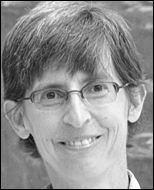
|
Mara Prentiss, "Energy Revolution"September 23, 2015 | Video: [HTML5 Video] | [MP4] We can launch an energy revolution that drastically decreases CO2 emission and other deleterious consequences associated with fossil fuel burning. Energy extraction can be cut by more than 50% by converting fossil fuel burning engines to electric motors and replacing fossil fuel burning power plants with renewable sources. In addition, energy efficient systems and improvements in computation and connectivity can significantly reduce energy consumption and lower energy costs. These goals can be achieved using commercially available technologies. New technologies may offer even greater opportunities.
|
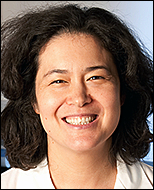
|
Susan E. Mango, "Cells, Membranes, Cholesterol and Temperature Control"April 8, 2015 | Video:[HTML5 Video] | [MP4] This seminar is a lecture from Life Sciences 1a, a course taken by approximately 500 freshmen each year as an introduction to chemistry and biology. The course covers the fundamentals of chemistry and their application to biology, ranging from the structure of DNA to the molecular biology of cancer, HIV and drugs. In this lecture, we’ll discuss membranes, which enclose cells, and their ability to adapt to different environments – in part, through the use of cholesterol.
|
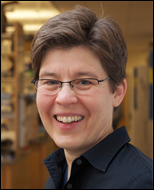
|
Jennifer A. Lewis, "3D Printing: Making the Future"March 4, 2015 | Video: [HTML5 Video] | [MP4] 3D printing enables one to rapidly design and fabricate materials in arbitrary shapes on demand. I will introduce the fundamental principles that underpin 3D printing techniques. I will then describe how new functional and biological materials are vastly expanding the capabilities of 3D printing. Finally, I will highlight several emerging examples, including 3D printed electronics, lightweight composites, and vascularized tissue constructs, that demonstrate how this (still) nascent technology is being used to make the future.
|
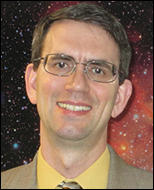
|
Daniel Eisenstein, "Dark Energy and Cosmic Sound"February 4, 2015 | Video: [HTML5 Video] | [MP4] The Sound waves propagating through the plasma of the Universe only 400,000 years after the Big Bang now offer some of our most precise measures of the composition and history of the Universe. In the last decade, we have been able to detect the fossil imprint of these sound waves using maps of the distribution of galaxies from the Sloan Digital Sky Survey. Professor Eisenstein will give an overview of the cosmological role of the sound waves and our observational program then describe what the results tell us about the shape of the Universe and the evolution of dark energy.
|
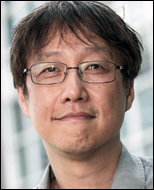
|
Philip Kim, "Relativity, Quantum Physics, and Graphene"November 20, 2014 | Video: [HTML5 Video] | [MP4] The two most important achievements in physics in the 20th century were the discoveries of the theory of relativity and quantum physics. In 1928, Paul Dirac synthesized these two theories and wrote the Dirac equation to describe particles moving close to the speed of light in a quantum mechanical way, and thus initiated the beginning of relativistic quantum mechanics. Graphene, a single atomic layer of graphite discovered only a decade ago, has been providing physicists opportunities to explore an interesting analogy to relativistic quantum mechanics. The unique electronic structure of graphene yields an energy and momentum relation mimicking that of relativistic quantum particles, providing opportunities to explore exotic and exciting science and potential technological applications based on the flat carbon form. In this presentation Professor Kim discuses the brief history of graphene research and its implications in science and technology.
|
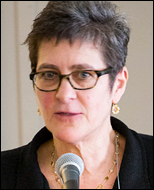
|
Melissa Franklin, "Relativity, Quantum Physics, and Graphene"October 30, 2014 | Video: [HTML5 Video] | [MP4] In this talk Professor Franklin will explain how physicists search for new particles, such as the Higgs boson, at the Large Hadron Collider, and specifically what they found at a mass of 126 GeV that they call the Higgs. She discussed the accelerator, the ATLAS experiment, the evidence for the Higgs, and prospects for new discoveries in 2015.
|
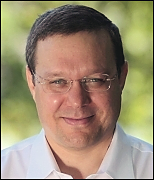
|
Avi Loeb, "New Search Methods for Primitive and Intelligent Life Far from Earth"September 23, 2014 | Video: [HTML5 Video] | [MP4] "Are we alone or is the universe teeming with life?" is one of the most fundamental questions in science. The answer could have a dramatic impact on society and culture. Over the next decade, advances in technology will allow astronomers to address this question in new ways. Professor Loeb describes a few novel techniques that could potentially detect primitive or intelligent forms of life in the solar system and around nearby stars. He also discuss how early after the Big Bang life may have started, as well as its prospects for survival in our long-term cosmic future.
|
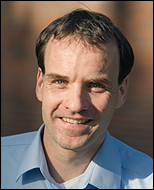
|
Markus Greiner, "Atomic Legos: Building and Investigating Quantum Materials One Atom at a Time"April 10, 2014 | Video: [HTML5 Video] | [MP4] Ultracold atoms offer a fascinating view of the quantum world. With the quantum gas microscope, invented here at Harvard, we take pictures of individual atoms dancing to the rules of quantum mechanics. For example, quantum mechanics allows a single atom to exist in many locations at once. This so-called "quantum superposition" can be directly observed with our microscope. By looking at just one or two atoms, we can gain intuition about this bizarre quantum world. We can then use our ultracold atoms as building blocks to assemble synthetic quantum materials and to explore new states of matter.
|

|
Pardis Sabeti, "Evolutionary Forces in Humans and Pathogens"March 13, 2014 | Video: [HTML5 Video] | MP4 The genome revolution has created unprecedented opportunities to study human biology, evolution, and disease, and is making it possible to carry out unprecedented studies in the microbial pathogens that affect humans. Sabeti lab’s research goals are to use the rapidly emerging resources to develop and apply methods to investigate natural selection in the human genome and study the genomic evolution of the microbial pathogens that affect humans including Lassa virus, Ebola, Plasmodium Falciparum, and Vibrio Cholerae.
|
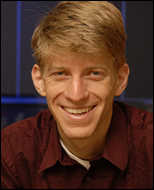
|
Adam Cohen, "Bringing Bioelectricity to Light"February 27, 2014 | Video: [HTML5 Video] | [MP4] Electrical signaling plays a fundamental role in biology: our neurons communicate with little electrical blips, our heart is paced by an electrical wave, and every cell in our body powers part of its metabolism from electrical energy in mitochondria. Yet just by looking at a cell, we cannot see these electrical signals. Professor Cohen describes how his group engineered a gene from a Dead Sea microorganism to act as a voltage indicator, to convert bioelectric signals into flashes of fluorescence. They are using this voltage indicator to study bioelectric phenomena throughout life, and seeing many surprising effects. By expressing this indicator in human stem cell-derived models of neurodegenerative disease, they are gaining insights into disease mechanisms and possible treatments. This research is only possible because some ecologists went looking in the muck by the Dead Sea thirty years ago.
|
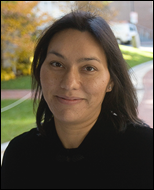
|
Sarah Stewart, "Atomic Legos: Building and Investigating Quantum Materials One Atom at a Time"December 18, 2013 | Video: [HTML5 Video] | [MP4] The physical properties of our planet are intricately tied to the sequence of giant impact events that led to the formation of the Moon. The canonical giant impact model for lunar origin has been called into question by recent geochemical measurements of lunar rocks. Professor Stuart presents a new model for the origin of the Earth and Moon that reconciles the observations and highlights the importance of stochastic early events in shaping our habitable world.
|
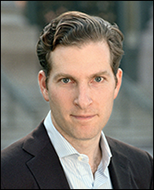
|
Noah Feldman, "On the Nature of Evidence"November 13, 2013 | Video: [HTML5 Video] | [MP4]
What counts as evidence?
|
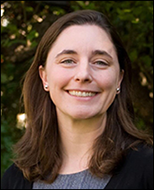
|
Katie Hinde, "Why Mammals Suck"October 16, 2013 | Video: [HTML5 Video] | [MP4] Milk is abundant at our local grocery store in the form of dairy products and infant formulas. This ubiquity of homogenized milk in our modern environment has the potential for the general public, and even researchers, to think of milk one dimensionally. Milk is not just food, however, but is also medicine and signal. Hundreds, possibly thousands, of other milk “bioactives” affect the infant. Professor Hindepresents emerging research that addresses the magnitude, sources, and consequences of inter-individual variation in mother’s milk including that the “recipe” for milk can be different for sons and daughters.
|
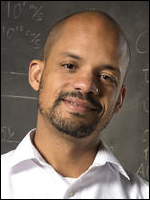
|
John Asher Johnson, "Hot on the Trail of Warm Planets Around Cool Stars"September 25, 2013 | Video: [HTML5 Video] | [MP4] Just three years ago the prospect of finding temperate, rocky worlds around other stars was still the subject of science fiction: none had been found and reasonable estimates put us years or decades away from such a momentous discovery. All of that has changed very recently on the heels of the extraordinarily successful NASA Kepler mission. By searching for the tiny diminutions of starlight indicative of an eclipsing planet, Kepler has produced thousands of new planet candidates orbiting distant stars. Careful statistical analyses have shown that the majority of these candidates are bona fide planets, and the number of planets increases sharply toward Earth-sized bodies. Even more remarkably, many of these planets are orbiting stars right “next door.” Professor Johnson describe the multi-telescope campaign to validate and characterize these tiny planetary systems, and presents some early, exciting results that point the way toward a large sample of Earth-sized planets in the habitable zones of nearby stars.
|
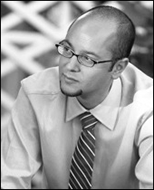
|
Edo Berger, "Gamma-Ray Bursts: The Biggest Explosion Since the Big Bang!"May 8, 2013 | Video: [HTML5 Video] | [MP4] Representing Nature’s biggest explosions since the Big Bang itself, gamma-ray bursts were first accidentally spotted in the 1960s by Department of Defense satellites hunting for terrestrial nuclear blasts. In this talk Prof. Berger describes the ensuing decades-long quest to decipher the origin and energy source of these mysterious explosions. He also explains how gamma-ray bursts are now used to probe the first generation of stars and galaxies formed less than a billion years after the Big Bang.
|
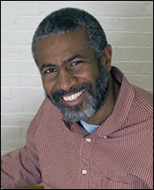
|
Scott Edwards, "Birds: Evolution and Innovation in a Changing World"March 27, 2013 | Video: [HTML5 Video] | [MP4] In this talk Prof. Edwards celebrates the remarkable 100 million year history of birds and describe the imprint of ancient innovations, such as feathers and flight, on many aspects of avian biology, right down to their DNA. He also describes how diverse environmental challenges, such as climate change, disease, toxic metals and urban noise, test the resilience of birds today.
|
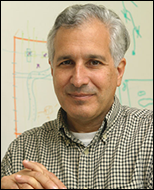
|
Jeff Lichtman, "Connectomics: Mapping the Brain"February 27, 2013 | Video: [HTML5 Video] | [MP4] Despite intense interest in the ways brains work, we still have quite a rudimentary understanding of this organ, especially compared to our knowledge of the other organ systems in the body. One central problem is that brain function is based on a much more complicated cellular organization than found in any other part of the body. The brain contains billions of nerve cells and these are interconnected by trillions of synapses in a vast wiring diagram. This wiring diagram has not been described but likely contains the physical instantiations of all the brain does including all the memories we hold and all the skills we have learned. In addition such a wiring diagram may be disrupted when there are abnormalities in brain function such as learning disorders in children or psychiatric diseases in adults. Now scientists are taking the first steps in imaging and understanding the wiring diagram of the brain...
|
Copyright © 2024 The President and Fellows of Harvard College | Accessibility | Digital Accessibility | Report Copyright Infringement
 back to
back to 